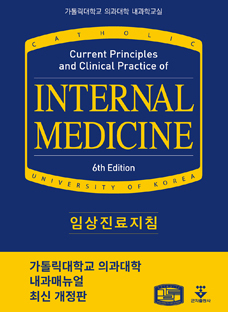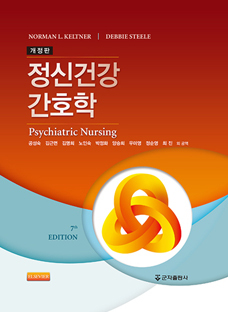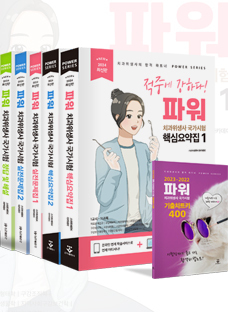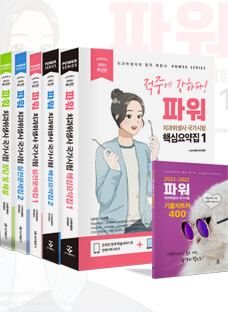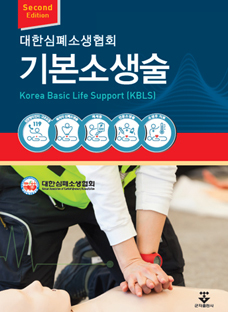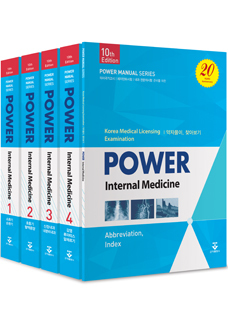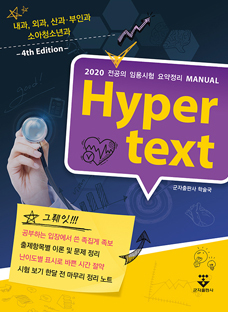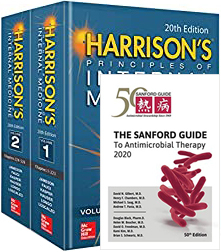Preface xvii
1 Novel Thermal Technologies: Trends and Prospects 1
Amrita Preetam, Vipasha, Sushree Titikshya, Vivek Kumar, K.K Pant and S N Naik
1.1 Introduction 1
1.2 Novel Thermal Technologies: Current Status and Trends 3
1.2.1 Environmental Impact of Novel Thermal Technologies 6
1.2.2 The Objective of Thermal Processing 8
1.2.3 Preservation Process 9
1.3 Types of Thermal Technologies 11
1.3.1 Infrared Heating 12
1.3.1.1 Principal and Mechanism 12
1.3.1.2 Advantages of IR Heating 13
1.3.1.3 Applications of IR Heating 14
1.3.2 Microwave Heating 14
1.3.2.1 Principal and Mechanism 14
1.3.2.2 Advantages of Microwave in Food Industry 17
1.3.2.3 Application of Microwave in Food Processing Technologies 19
1.3.3 Radiofrequency (RF) Heating 24
1.3.3.1 Principal and Mechanism 24
1.3.3.2 Advantages and Disadvantages 26
1.3.3.3 Applications 27
1.3.4 Ohmic Heating 28
1.3.4.1 Principal and Mechanism 28
1.3.4.2 Advantages and Disadvantages 31
1.3.4.3 Applications 33
1.4 Future Perspective of Novel Thermal Technologies 36
1.5 Conclusion 36
References 37
2 Microbial Inactivation with Heat Treatments 45
Sushree Titikshya, Monalisa Sahoo, Vivek Kumar and S.N Naik
2.1 Introduction 45
2.2 Innovate Thermal Techniques for Food Reservation 47
2.3 Inactivation Mechanism of Targeted Microorganism 48
2.3.1 Action Approach and Inactivation Targets 49
2.4 Environmental Stress Adaption 50
2.4.1 Sublethal Injury 50
2.5 Resistance of Stress 51
2.5.1 Oxidative Stress 51
2.5.2 Osmotic Stress 52
2.5.3 Pressure 52
2.6 Various Techniques for Thermal Inactivation 52
2.6.1 Infrared Heating 52
2.6.1.1 Principle and Mechanism 52
2.6.1.2 Application for Inactivation in Food Sector 53
2.6.2 Microwave Heating 57
2.6.2.1 Principle and Mechanism 57
2.6.2.2 Application for Inactivation in Food Sector 58
2.6.3 Radiofrequency Heating 59
2.6.3.1 Principle and Mechanism 59
2.6.3.2 Application for Inactivation in Food Sector 60
2.6.4 Instant Controlled Pressure Drop Technology (DIC) 60
2.6.4.1 Principle and Mechanism 60
2.6.4.2 Application for Inactivation in Food Sector 61
2.6.5 Ohmic Heating 62
2.6.5.1 Principle and Mechanism 62
2.6.5.2 Application for Inactivation in Food Sector 63
2.7 Forthcoming Movements of Thermal Practices in Food Industry 64
2.8 Conclusion 65
References 66
3 Blanching, Pasteurization and Sterilization: Principles and Applications 75
Monalisa Sahoo, Sushree Titikshya, Pramod Aradwad, Vivek Kumar and S N Naik
3.1 Introduction 76
3.2 Blanching: Principles & Mechanism 76
3.2.1 Types of Blanching 76
3.2.1.1 Hot Water Blanching 76
3.2.1.2 Steam Blanching 80
3.2.1.3 High Humidity Hot Air Impingement Blanching (HHAIB) 81
3.2.1.4 Microwave Blanching 81
3.2.1.5 Ohmic Blanching 85
3.2.1.6 Infrared Blanching 86
3.2.2 Application of Blanching 89
3.2.2.1 Inactivation of Enzymes 89
3.2.2.2 Enhancement of Product Quality and Dehydration 90
3.2.2.3 Toxic and Pesticides Residues Removal 90
3.2.2.4 Decreasing Microbial Load 90
3.2.2.5 Reducing Non-Enzymatic Browning Reaction 91
3.2.2.6 Peeling 91
3.2.2.7 Entrapped Air Removal 91
3.2.2.8 Enhancing Bioactive Extraction Efficiency 91
3.2.2.9 Other Applications 92
3.3 Pasteurization: Principles & Mechanism 92
3.3.1 Thermal Pasteurization 92
3.3.2 Traditional Thermal Pasteurization 93
3.3.3 Microwave and Radiofrequency Pasteurization 93
3.3.4 Ohmic Heating Pasteurization 94
3.3.5 Application of Pasteurization 98
3.4 Sterilization: Principles, Mechanism and Types of Sterilization 98
3.4.1 Conventional Sterilization Methods 99
3.4.2 Advanced Retorting 100
3.4.3 Microwave-Assisted Thermal Sterilization 101
3.4.4 Pressure-Assisted Thermal Sterilization 103
3.5 Conclusions 104
References 104
4 Aseptic Processing 117
Malathi Nanjegowda, Bhaveshkumar Jani and Bansee Devani
4.1 Introduction 118
4.2 Aseptic Processing 118
4.3 Principle of Thermal Sterilization 121
4.3.1 Effect of Thermal Treatment on Enzymes 123
4.3.2 Effect of Thermal Treatments on Nutrients and Quality 123
4.3.3 Effect of Thermal Treatments on the Cooking Index (C0) 124
4.3.4 Effect of Heat Treatments on Chemical Reactions in Food 124
4.4 Components of Aseptic Processing 124
4.4.1 Equipment Used in Aseptic/UHT Processing 124
4.4.1.1 Indirect Heat Exchanger 125
4.4.1.2 Direct Heat Exchanger 126
4.4.1.3 Ohmic Heating (OH) 126
4.5 Aseptic Packaging 127
4.5.1 Types of Packaging Materials Used in Aseptic Processing 127
4.5.2 Methods and Requirements of Decontamination of Packaging Materials 128
4.6 Applications of Aseptic Processing and Packaging 128
4.6.1 Milk Processing 133
4.6.2 Non-Milk Products Processing 135
4.7 Advantages of Aseptic Processing and Packaging 136
4.8 Challenges of Aseptic Processing and Packaging 137
4.9 Conclusion 137
References 138
5 Spray Drying: Principles and Applications 141
Sukirti Joshi, Asutosh Mohapatra, Lavika Singh and Jatindra K Sahu
5.1 Introduction 142
5.2 Concentration of Feed Solution 142
5.3 Atomization of Concentrated Feed 143
5.3.1 Principle of Atomization 143
5.3.2 Classification of Atomizers 143
5.3.2.1 Rotary Atomizers 144
5.3.2.2 Pressure Nozzle/Hydraulic Atomizer 144
5.3.2.3 Two‐Fluid Nozzle Atomizer 145
5.4 Droplet‐Hot Air Contact 145
5.5 Drying of Droplets 146
5.6 Particle Separation 148
5.7 Effect of Process Parameters on Product Quality 148
5.7.1 Process Parameters of Atomization 150
5.7.2 Parameters of Spray‐Air Contact and Evaporation 151
5.7.2.1 Spray Angle 151
5.7.2.2 Aspirator Flow Rate 151
5.7.2.3 Inlet Air Temperature 151
5.7.2.4 Outlet Air Temperature 152
5.7.2.5 Glass Transition Temperature 152
5.7.2.6 Residence Time 153
5.8 Classification of Spray Dryer 153
5.8.1 Open-Cycle Spray Dryer 153
5.8.2 Closed-Cycle Spray Dryer 154
5.8.3 Semi‐Closed Cycle Spray Dryer 154
5.8.4 Single‐Stage Spray Dryer 154
5.8.5 Two‐Stage Spray Dryer 154
5.8.6 Short‐Form Spray Dryer 154
5.8.7 Tall‐Form Spray Dryer 154
5.9 Morphological Characterization of Spray-Dried Particles 155
5.10 Application of Spray Drying for Foods 156
5.11 Wall Materials 157
5.11.1 Carbohydrate-Based Wall Materials 158
5.11.1.1 Starch 158
5.11.1.2 Modified Starch 158
5.11.1.3 Maltodextrins 158
5.11.2 Cyclodextrins 159
5.11.3 Gum Arabic 159
5.11.4 Inulin 159
5.11.5 Pectin 160
5.11.6 Chitin and Chitosan 160
5.11.7 Protein-Based Wall Materials 160
5.11.7.1 Whey Protein Isolate 161
5.11.7.2 Skim Milk Powder 161
5.11.7.3 Soy Protein Isolate (SPI) 161
5.12 Encapsulation of Probiotics 162
5.12.1 Choice of Bacterial Strain 162
5.12.2 Response to Cellular Stresses 163
5.12.3 Growth Conditions 164
5.12.4 Effect of pH 164
5.12.5 Harvesting Technique 165
5.12.6 Total Solid Content of the Feed Concentrate 165
5.13 Encapsulation of Vitamins 165
5.14 Encapsulation of Flavours and Volatile Compounds 166
5.14.1 Selective Diffusion Theory 166
5.15 Conclusion and Perspectives 170
References 170
6 Solar Drying: Principles and Applications 179
Baher M A Amer
6.1 Introduction 179
6.2 Principle of Solar Drying 180
6.3 Construction of Solar Dryer 181
6.4 Historical Classification of Solar Energy Drying Systems 182
6.5 Storing Solar Energy for Drying 185
6.6 Hybrid/Mixed Solar Drying System 186
6.7 Solar Greenhouse Dryer 188
6.8 Solar Drying Economy 188
6.9 New Applications Related to Solar Drying 190
References 192
7 Fluidized Bed Drying: Recent Developments and Applications 197
Praveen Saini, Nitin Kumar, Sunil Kumar and Anil Panghal
7.1 Introduction 197
7.2 Principle and Design Considerations of Fluidized Bed Dryer 198
7.2.1 Spouted Bed Dryer 201
7.2.2 Spout Fluidized Bed Dryer 202
7.2.3 Hybrid Drying Techniques 205
7.2.3.1 Microwave-Assisted FBD 205
7.2.3.2 FIR-Assisted FBD 206
7.2.3.3 Heat Pump–Assisted FBD 207
7.2.3.4 Solar-Assisted FBD 207
7.3 Design Alterations for Improved Fluidization Capacity 208
7.3.1 Vibrated Fluidized Bed 208
7.3.2 Agitated Fluidized Bed 209
7.3.3 Centrifugal Fluidized Bed 210
7.4 Energy Consumption in Fluidized Bed Drying 211
7.5 Effect of Fluidized Bed Drying on the Quality 212
7.6 Applications of Fluidized Bed Drying 215
7.7 Concluding Remarks 215
References 215
8 Dehumidifier Assisted Drying: Recent Developments 221
Vaishali Wankhade, Vaishali Pande, Monalisa Sahoo and Chirasmita Panigrahi
8.1 Introduction 221
8.2 Absorbent Air Dryer 222
8.2.1 Working Principle of Adsorption Air Dryer 223
8.2.2 Design Considerations and Components of the Absorbent Air Drier 223
8.2.2.1 Desiccant Drying System 223
8.2.3 Performance Indicators of Desiccant Air Dryer System 226
8.2.3.1 Low Temperature Drying With No Temperature Control and Air Circulation System 227
8.2.3.2 Low Temperature Drying With Air Circulation and Temperature Control 228
8.3 Heat Pump–Assisted Dehumidifier Dryer 228
8.3.1 Working Principles of a Heat Pump–Assisted Dehumidifier Dryer 229
8.3.2 Performance Indicators of Heat Pump–Assisted Dehumidifier Dryer 231
8.4 Applications of Dehumidifier-Assisted Dryers in Agriculture and Food Processing 233
8.5 Concluding Remarks 234
References 234
9 Refractance Window Drying: Principles and Applications 237
Peter Waboi Mwaurah, Modiri Dirisca Setlhoka and Tanu Malik
9.1 Introduction 238
9.2 Refractance Window Drying System 239
9.2.1 History and Origin 239
9.2.2 Components and Working of the Dryer 240
9.2.3 Principle of Operation 242
9.3 Heat Transfer and Drying Kinetics 244
9.3.1 Drying Rate and Moisture Reduction Rate 245
9.4 Effect of Process Parameters on Drying 245
9.4.1 Effect of Temperature of the Hot Circulating Water 245
9.4.2 Effect of Product Inlet Temperature and Thickness 246
9.4.3 Effect of Residence Time 247
9.4.4 Effect of Ambient Air Temperature (Air Convection) 247
9.5 Comparison of Refractance Window Dryer with Other Types of Dryers 247
9.6 Effect of Refractance Window Drying on Quality of Food Products 248
9.6.1 Effects on Food Color 249
9.6.2 Effects on Bioactive Compounds 250
9.6.2.1 Carotene Retention 251
9.6.2.2 Ascorbic Acid Retention 252
9.6.2.3 Anthocyanin Retention 252
9.7 Applications of Refractance Window Drying in Food and Agriculture 253
9.7.1 Applications of Refractance Window Drying in Preservation of Heat-Sensitive and Bioactive Compounds 253
9.7.2 Applications of Refractance Window Drying on Food Safety 254
9.8 Advantages and Limitations of Refractance Window Dryer 255
9.9 Recent Developments in Refractance Window Drying 255
9.10 Conclusion and Future Prospects 256
References 257
10 Ohmic Heating: Principles and Applications 261
Sourav Misra, Shubham Mandliya and Chirasmita Panigrahi
10.1 Introduction 261
10.2 Basic Principles 263
10.3 Process Parameters 265
10.3.1 Electrical Conductivity 265
10.3.2 Electrical Field Strength 266
10.3.3 Frequency and Waveform 267
10.3.4 Product Size, Viscosity, and Heat Capacity 267
10.3.5 Particle Concentration 267
10.3.6 Ionic Concentration 267
10.3.7 Electrodes 268
10.4 Equipment Design 268
10.5 Application 270
10.5.1 Blanching 276
10.5.2 Pasteurisation/Sterilization 276
10.5.3 Extraction 277
10.5.4 Dehydration 278
10.5.5 Fermentation 279
10.5.6 Ohmic Thawing 280
10.6 Effect of Ohmic Heating on Quality Characteristics of Food Products 280
10.6.1 Starch and Flours 280
10.6.1.1 Water Absorption Index (WAI) and Water Solubility Index (WSI) 280
10.6.1.2 Pasting Properties 280
10.6.1.3 Thermal Properties 281
10.6.2 Meat Products 282
10.6.3 Fruits and Vegetable Products 282
10.6.3.1 Electrical Properties 282
10.6.3.2 Soluble Solids Content and Acidity 282
10.6.3.3 Vitamins 283
10.6.3.4 Flavor Compounds 284
10.6.3.5 Phenolic Compounds 284
10.6.3.6 Colour Properties 284
10.6.3.7 Change in Chlorophyll Content 285
10.6.3.8 Textural Properties 285
10.6.3.9 Sensory Properties 286
10.6.4 Dairy Products 286
10.6.5 Seafoods 290
10.7 Advantages of Ohmic Heating 290
10.8 Disadvantages of Ohmic Heating 291
10.9 Conclusions 291
References 292
11 Microwave Food Processing: Principles and Applications 301
Jean-Claude Laguerre and Mohamad Mazen Hamoud-Agha
11.1 Introduction 301
11.2 Principles of Microwave Heating 302
11.2.1 Nature of Microwaves 302
11.2.1.1 Propagation of EM Waves in Free Space 302
11.2.1.2 Propagation of EM Waves in Matter 306
11.2.2 Mechanism of Microwave Heating 309
11.2.2.1 Dielectric Characteristic of a Material 309
11.2.2.2 Waves-Product Interactions 312
11.2.3 Transmission and Absorption of a Wave in a Material 316
11.2.3.1 Expression of Transmitted Power 316
11.2.3.2 Penetration Depths 317
11.2.3.3 Power Dissipation 319
11.3 Applications 320
11.3.1 Microwave Baking 320
11.3.2 Microwave Blanching 323
11.3.3 Microwave Tempering and Thawing 326
11.3.4 Microwave Drying 328
11.3.4.1 Microwave-Assisted Hot Air Drying 329
11.3.4.2 Microwave-Assisted Vacuum Drying 330
11.3.4.3 Microwave-Assisted Freeze-Drying 330
11.3.5 Microwave Pasteurization and Sterilization 331
References 334
12 Infrared Radiation: Principles and Applications in Food Processing 349
Puneet Kumar, Subir Kumar Chakraborty and Lalita
12.1 Introduction 350
12.2 Mechanism of Heat Transfer 351
12.2.1 Principles of IR Heating 351
12.2.1.1 Planck’s Law 352
12.2.1.2 Wien’s Displacement Law 352
12.2.1.3 Stefan–Boltzmann’s Law 352
12.2.2 Source of IR Radiations 353
12.2.2.1 Natural Source 354
12.2.2.2 Artificial Sources 354
12.3 Factors Affecting the Absorption of Energy 356
12.3.1 Characteristics of Food Materials 357
12.3.1.1 Composition 357
12.3.1.2 Layer Thickness 357
12.3.2 IR Parameters 357
12.3.2.1 Wavelength of IR Rays 358
12.3.2.2 IR Intensity 358
12.3.2.3 Depth of Penetration 358
12.3.3 Advantages of IR Heating Over Conventional Heating Methods 359
12.4 Applications of IR in Food Processing 359
12.4.1 Drying 360
12.4.2 Peeling 361
12.4.3 Blanching 363
12.4.4 Microbial Decontamination 364
12.5 IR-Assisted Hybrid Drying Technologies 366
12.5.1 IR-Freeze-Drying 366
12.5.2 Hot Air-Assisted IR Heating 367
12.5.3 Low-Pressure Superheated Steam Drying with IR 368
12.6 Conclusion 368
References 369
13 Radiofrequency Heating 375
Chirasmita Panigrahi, Monalisha Sahoo, Vaishali Wankhade and Siddharth Vishwakarma
13.1 Introduction 376
13.2 History of RF Heating 377
13.3 Principles and Equipment 378
13.3.1 Basic Mechanism of Dielectric Heating 378
13.3.1.1 Basic Mechanism and Working of Radiofrequency Heating 379
13.3.1.2 Basic Mechanism and Working of Microwave Heating 380
13.3.2 Factors of Food Affecting the Performance of RF Processing 380
13.3.2.1 Permittivity and Loss Factor 380
13.3.2.2 Power Density and Penetration Depth 381
13.3.2.3 Wave Impedance and Power Reflection 382
13.3.3 Comparison of RF Heating With Other Methods 383
13.3.4 Lab Scale and Commercial Scale of RF Equipment 385
13.3.4.1 Radiofrequency Processing of Food at Lab Scale 386
13.3.4.2 Radiofrequency Processing of Food at Industrial Scale 387
13.4 Applications in Food Processing 388
13.4.1 Drying 388
13.4.2 Thawing 393
13.4.3 Roasting 394
13.4.4 Baking 394
13.4.5 Disinfestation 395
13.4.6 Blanching 395
13.4.7 Pasteurization/Sterilization 396
13.5 Technological Constraints, Health Hazards, and Safety Aspects 399
13.6 Commercialization Aspects and Future Trends 402
13.7 Conclusions 404
References 404
14 Quality, Food Safety and Role of Technology in Food Industry 415
Nartaj Singh and Prashant Bagade
14.1 Introduction 416
14.1.1 Food Quality 417
14.1.1.1 Primary and Secondary Food Processing 419
14.1.1.2 Historical Trends in Food Quality 421
14.1.1.3 Food Quality Standards and its Requirements 423
14.1.1.4 Role of Technology in Building Food Quality Within the Industry 440
14.1.1.5 Regulations and their Requirements 444
14.1.2 Food Safety 445
14.1.2.1 Primary and Secondary Food Production 445
14.1.2.2 Historical Trends in Food Safety 446
14.1.2.3 Food Safety Standards and its Requirements 447
14.1.2.4 Role of Technology in Building Food Safety Within Industry 450
14.2 Future Trends in Quality and Food Safety 451
14.3 Conclusion 453
References 453
Index 455
